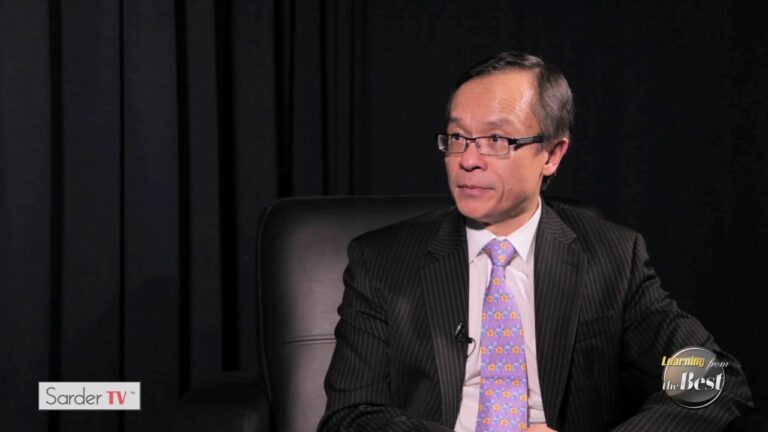Curator Job: Responsibilities & Salary
Curator Job Description: A curator is responsible for managing and preserving collections of artworks, historical artifacts, or other valuable items in museums, galleries, or cultural institutions. They research, acquire, catalog, and exhibit these items to educate and entertain the public. Curators also collaborate with artists, historians, and collectors to plan and organize exhibitions, lectures, and special events. They may also write articles or books, conduct research, and provide educational programs for visitors.
Curators must have a strong knowledge of art, history, or the specific subject matter of the collection they oversee. They must also have excellent organizational and managerial skills to oversee the preservation and maintenance of the collection. Curators may work closely with conservationists and other specialists to ensure the proper care and restoration of the items.
Curator Salary: The salary of a curator can vary depending on factors such as the size and prestige of the institution, location, experience, and education. According to the Bureau of Labor Statistics, the median annual wage for curators was $58,830 as of May 2020. However, salaries can range from around $34,000 to over $100,000 per year.
Curators in larger institutions or those with advanced degrees and extensive experience tend to earn higher salaries. Additionally, curators who work in major cities or renowned museums may have higher earning potential. It is important to note that the salary can also include benefits such as health insurance, retirement plans, and vacation time, which can vary depending on the employer.

Curator Job Description Template
Curator Job Description
A curator is a professional responsible for managing and preserving collections of artworks, historical artifacts, or other valuable items in museums, galleries, or cultural institutions. Their primary role is to research, acquire, document, and display objects in a way that promotes education, interpretation, and engagement with the public.
Curators are responsible for developing and implementing exhibition concepts, themes, and narratives. They work closely with other museum professionals, such as conservators, educators, and exhibition designers, to create engaging and informative displays. Curators are also involved in conducting research and writing scholarly publications related to the collections they manage.
In addition to curating exhibitions, curators are responsible for cataloging and maintaining accurate records of the collection. They may also be involved in acquiring new items through donations, purchases, or loans, and ensuring their proper preservation and storage.
One of the most important skills for a curator is a deep knowledge and understanding of the specific collection they are responsible for. They must be familiar with the historical and cultural context of the objects and be able to interpret them for a diverse audience.
Attention to detail is another crucial aspect of the job. Curators need to have excellent organizational skills to manage the collection effectively and ensure its long-term preservation.
Overall, curators play a vital role in preserving cultural heritage and providing educational experiences to the public. They are passionate about their field and dedicated to sharing the significance and beauty of the collections they curate.
Curator Responsibilities
Curator Requirements
How Much Does A Curator Make?
Curator Salary
| Position | Salary Range |
|---|---|
| Entry-level Curator | $35,000 – $45,000 |
| Assistant Curator | $45,000 – $55,000 |
| Associate Curator | $55,000 – $70,000 |
| Curator | $70,000 – $90,000 |
| Senior Curator | $90,000 – $120,000 |
A curator is a professional who manages and oversees collections in museums, art galleries, or other cultural institutions. They are responsible for acquiring, preserving, and interpreting artworks or artifacts in order to educate and engage the public. The salary of a curator varies depending on factors such as experience, location, and the size of the institution they work for. The table above provides a general salary range for different curator positions, but it’s important to note that these figures can vary significantly. Curators with higher levels of experience and expertise often earn higher salaries.
Curator Salaries by Country
Top Paying Countries for Curator
| Country | Average Salary (USD) |
|---|---|
| United States | 67,760 |
| Switzerland | 62,950 |
| Australia | 59,480 |
| United Kingdom | 52,180 |
| Germany | 47,310 |
A curator is responsible for managing and preserving collections in museums, art galleries, and other cultural institutions. The salary of a curator can vary greatly depending on the country they work in.
According to available data, the top paying countries for curators are the United States, Switzerland, Australia, the United Kingdom, and Germany. In the United States, curators earn an average salary of $67,760 per year, making it one of the highest-paying countries for this profession. Switzerland follows closely with an average salary of $62,950, while Australia offers an average salary of $59,480. In the United Kingdom, curators earn an average of $52,180, and in Germany, the average salary is $47,310.
These figures represent the average salaries and may vary based on factors such as experience, qualifications, and the specific institution the curator works for. Curators in these countries often have extensive knowledge and expertise in their respective fields, contributing to their higher earning potentials.
It’s important to note that while these countries offer higher salaries for curators, they may also have higher costs of living and different employment conditions compared to other countries. Curators considering opportunities abroad should carefully research and consider various factors before making decisions about their careers.
A video on the topic Curator
Video Source : The Art Assignment
Interview Questions for Curator
1. What qualifications and experience do you have as a curator?
As a curator, I have a Bachelor’s degree in Art History and a Master’s degree in Museum Studies. I also have several years of experience working in various museums and galleries, where I curated exhibitions and managed art collections.
2. How do you select artworks for an exhibition?
When selecting artworks for an exhibition, I consider various factors such as the theme or concept of the exhibition, the artistic quality of the works, their historical or cultural significance, and their relevance to the target audience. I also take into account the availability and condition of the artworks.
3. What steps do you take to preserve and protect artworks in a collection?
To preserve and protect artworks in a collection, I follow strict conservation guidelines. This includes maintaining proper environmental conditions such as temperature and humidity control, using specialized conservation materials for display and storage, implementing security measures, and regularly inspecting and monitoring the condition of the artworks.
4. How do you engage with the community and promote public access to the collection?
I engage with the community by organizing educational programs, workshops, and guided tours that provide insights into the collection. I also collaborate with local schools, universities, and community organizations to develop outreach initiatives. Additionally, I utilize digital platforms and social media to promote public access to the collection by sharing information, images, and videos.
5. How do you stay updated with current trends and developments in the art world?
To stay updated with current trends and developments in the art world, I regularly attend art fairs, exhibitions, and conferences. I also read art publications, research articles, and follow reputable art blogs and websites. Networking with fellow curators, artists, and art professionals is also essential in staying informed about the latest happenings in the field.
6. How do you handle controversial artworks or themes in exhibitions?
When dealing with controversial artworks or themes in exhibitions, I aim to foster open dialogue and understanding. I provide adequate context and information about the artworks to promote a thoughtful and respectful discussion. I also ensure that diverse perspectives are represented and that visitors have the option to engage or disengage with the sensitive content.
7. How do you manage the logistics and budget for an exhibition?
Managing the logistics and budget for an exhibition involves careful planning and coordination. I create a detailed timeline, prepare exhibition budgets, and liaise with various departments such as marketing, operations, and finance. I negotiate contracts with lenders, artists, and suppliers, and closely monitor expenses throughout the exhibition’s development and implementation.
8. How do you assess the success of an exhibition?
To assess the success of an exhibition, I consider multiple factors. Attendance figures, visitor feedback, and media coverage provide insights into the public reception. I also evaluate the achievement of the exhibition’s objectives, such as educational impact or engagement with specific target audiences. Additionally, I analyze any financial gains or losses and compare them to projected outcomes.
9. How do you handle the acquisition or deaccessioning of artworks?
Acquiring or deaccessioning artworks is a carefully considered process. I conduct thorough research and due diligence to ensure the quality and authenticity of potential acquisitions. When deaccessioning, I adhere to ethical guidelines and legal requirements, considering factors such as redundancy in the collection or the need to fund new acquisitions. I also consult with a board or committee before making any final decisions.
10. How do you incorporate technology and digital media into exhibitions?
Incorporating technology and digital media into exhibitions can enhance visitor experiences and accessibility. I utilize interactive displays, multimedia installations, and virtual reality to create immersive environments. I also incorporate digital platforms for online exhibitions, virtual tours, and educational resources. Technology allows for dynamic storytelling and the exploration of art in innovative ways.






